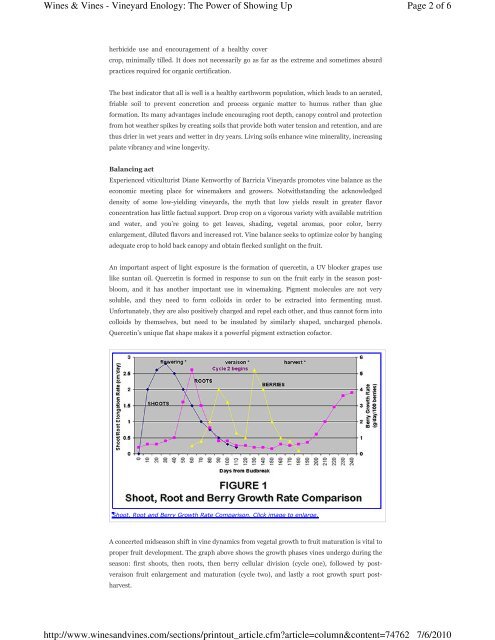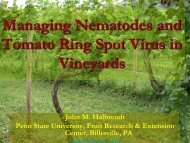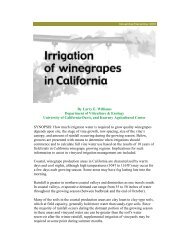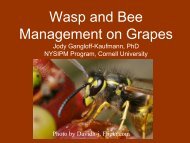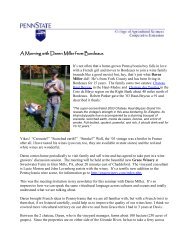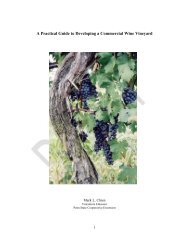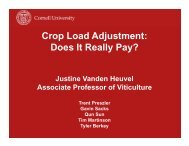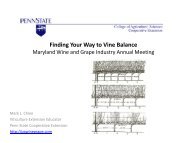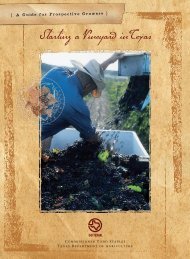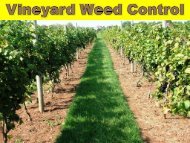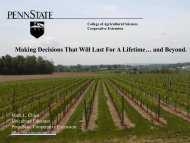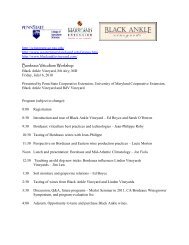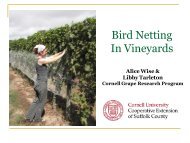Post Modern Winemaking_Clark Smith.pdf - PA Wine Grape ...
Post Modern Winemaking_Clark Smith.pdf - PA Wine Grape ...
Post Modern Winemaking_Clark Smith.pdf - PA Wine Grape ...
Create successful ePaper yourself
Turn your PDF publications into a flip-book with our unique Google optimized e-Paper software.
<strong>Wine</strong>s & Vines - Vineyard Enology: The Power of Showing Up<br />
http://www.winesandvines.com/sections/printout_article.cfm?article=column&content=74762<br />
Page 2 of 6<br />
7/6/2010<br />
herbicide use and encouragement of a healthy cover<br />
crop, minimally tilled. It does not necessarily go as far as the extreme and sometimes absurd<br />
practices required for organic certification.<br />
The best indicator that all is well is a healthy earthworm population, which leads to an aerated,<br />
friable soil to prevent concretion and process organic matter to humus rather than glue<br />
formation. Its many advantages include encouraging root depth, canopy control and protection<br />
from hot weather spikes by creating soils that provide both water tension and retention, and are<br />
thus drier in wet years and wetter in dry years. Living soils enhance wine minerality, increasing<br />
palate vibrancy and wine longevity.<br />
Balancing act<br />
Experienced viticulturist Diane Kenworthy of Barricia Vineyards promotes vine balance as the<br />
economic meeting place for winemakers and growers. Notwithstanding the acknowledged<br />
density of some low-yielding vineyards, the myth that low yields result in greater flavor<br />
concentration has little factual support. Drop crop on a vigorous variety with available nutrition<br />
and water, and you’re going to get leaves, shading, vegetal aromas, poor color, berry<br />
enlargement, diluted flavors and increased rot. Vine balance seeks to optimize color by hanging<br />
adequate crop to hold back canopy and obtain flecked sunlight on the fruit.<br />
An important aspect of light exposure is the formation of quercetin, a UV blocker grapes use<br />
like suntan oil. Quercetin is formed in response to sun on the fruit early in the season postbloom,<br />
and it has another important use in winemaking. Pigment molecules are not very<br />
soluble, and they need to form colloids in order to be extracted into fermenting must.<br />
Unfortunately, they are also positively charged and repel each other, and thus cannot form into<br />
colloids by themselves, but need to be insulated by similarly shaped, uncharged phenols.<br />
Quercetin’s unique flat shape makes it a powerful pigment extraction cofactor.<br />
Shoot, Root and Berry Growth Rate Comparison. Click image to enlarge.<br />
A concerted midseason shift in vine dynamics from vegetal growth to fruit maturation is vital to<br />
proper fruit development. The graph above shows the growth phases vines undergo during the<br />
season: first shoots, then roots, then berry cellular division (cycle one), followed by postveraison<br />
fruit enlargement and maturation (cycle two), and lastly a root growth spurt postharvest.


